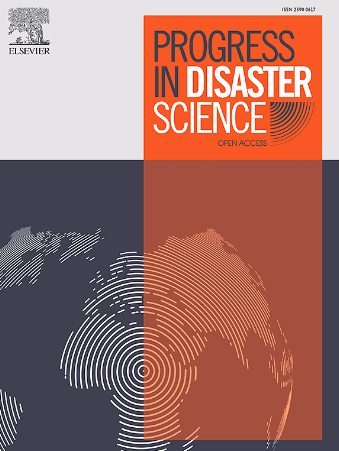使用多源数据的基于机器学习的雪灾风险识别和评估:来自日本福井县的见解
IF 3.8
Q3 ENVIRONMENTAL SCIENCES
引用次数: 0
摘要
了解暴风雪风险背后的驱动因素及其非线性效应对于制定有效的应对策略至关重要。本研究以2018年日本福井雪灾为研究对象,整合多源数据,包括移动GPS数据、数字高程模型(DEM)数据、道路数据、城市数据和交通拥堵数据,建立可解释模型,量化高风险区域,研究影响雪灾影响发生的关键非线性关系和阈值效应,为减灾策略提供可操作的见解。我们采用了四种机器学习模型——决策树、随机森林、多层感知器(MLP)和极端梯度增强(XGBoost)——来捕捉影响因素之间复杂的非线性关系,并应用SHAP (SHapley加性解释)理论来解释变量贡献。结果表明:(1)与随机森林、决策树和MLP模型相比,XGBoost模型的预测精度为0.8225;(2)高程、坡度、道路密度、道路宽度等因子对暴雪影响的非线性影响和阈值效应显著;(3)高程低于51.9m、坡度超过9.9°、主要道路(道路类型1)密度小于443.75m/km2、次要道路(道路类型2)密度小于550.25m/km2、农村道路(道路类型3)几乎没有、人口波动范围在- 0.25 ~ 0之间的城市地区特别容易受到雪灾的影响。相比之下,地势平坦、乡村道路密度高的地区受影响的可能性较小;(4)通过监测GPS数据进行预警和优化主干道和次要道路的sp配置,可以提高缓解交通拥堵的积雪抗灾能力。本文章由计算机程序翻译,如有差异,请以英文原文为准。
Machine learning-based identification and assessment of snow disaster risks using multi-source data: Insights from Fukui prefecture, Japan
Understanding the driving factors behind snowstorm risk and their nonlinear effects is critical for developing effective response strategies. This study, focusing on the 2018 Fukui snowstorm in Japan, integrates multi-source data, including mobile GPS data, Digital Elevation Model (DEM) data, road data, urban data, and traffic congestion data, to develop an interpretable model for quantifying high-risk areas and examining key nonlinear relationships and threshold effects influencing snowstorm impact occurrence, offering actionable insights for mitigation strategies. We employed four machine learning models—Decision Tree, Random Forest, Multilayer Perceptron (MLP), and Extreme Gradient Boosting (XGBoost)—to capture complex nonlinear relationships among influencing factors and applied SHAP (SHapley Additive exPlanations) theory to interpret variable contributions. The results reveal that: (1) compared to Random Forest, Decision Tree, and MLP models, the XGBoost model demonstrates superior performance with a prediction accuracy of 0.8225; (2) factors such as elevation, slope, road density, and road width exhibit significant nonlinear impacts and threshold effects on snowstorm impact occurrence; (3) Urban areas with elevation below , slopes exceeding , a density of major roads (Road Type 1) less than , a density of minor roads (Road Type 2) less than , and where rural roads (Road Type 3) are nearly absent, along with population fluctuations ranging between , are particularly vulnerable to snow disasters. In contrast, areas with flat terrain and high densities of rural roads are less likely to be affected; and (4) snow disaster resilience in mitigating traffic congestion can be improved by monitoring GPS data for early warnings and optimizing the sp. configuration of major and minor roads.
求助全文
通过发布文献求助,成功后即可免费获取论文全文。
去求助
来源期刊

Progress in Disaster Science
Social Sciences-Safety Research
CiteScore
14.60
自引率
3.20%
发文量
51
审稿时长
12 weeks
期刊介绍:
Progress in Disaster Science is a Gold Open Access journal focusing on integrating research and policy in disaster research, and publishes original research papers and invited viewpoint articles on disaster risk reduction; response; emergency management and recovery.
A key part of the Journal's Publication output will see key experts invited to assess and comment on the current trends in disaster research, as well as highlight key papers.
 求助内容:
求助内容: 应助结果提醒方式:
应助结果提醒方式:


